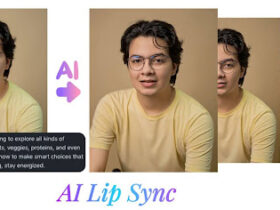In today’s world, where technology is constantly reshaping how we experience reality, one concept stands out as a subtle yet profound revolution—realifecamù. This idea goes beyond gadgets, apps, or camera systems; it represents a new way of living and observing life. Realifecamù invites us to explore raw authenticity in the digital age by capturing life as it truly unfolds—unscripted, emotional, and real.
In a digital landscape where filters dominate social media and the pursuit of perfection often masks true experiences, realifecamù offers a refreshing alternative. It’s about returning to unfiltered storytelling, showing life through a genuine, unpolished lens.
This article delves into what realifecamù is, its philosophy, its impact on modern creativity, and the ethical considerations surrounding it.
What Is Realifecamù?
Realifecamù is more than just a technological concept. It’s an approach that combines real-time observation, digital streaming, and human storytelling to create a deeper connection between viewers and the moments unfolding before them. Think of it as a living window—one that doesn’t just show you what’s happening but allows you to feel how it feels to be there.
At its core, realifecamù is built on the principle that life’s most meaningful moments often occur when no one is performing. Whether it’s a quiet conversation, a fleeting expression, or a moment of stillness, these unscripted fragments of life are what make realifecamù a powerful tool for emotional connection.
By allowing viewers to witness these genuine moments—laughter, tears, confusion, joy—realifecamù transforms everyday life into art. The result is an intimate blend of authenticity and vulnerability that no scripted production can replicate. It invites us to observe life as it truly is, without filters or edits.
The Philosophy Behind Realifecamù
At its heart, realifecamù isn’t about voyeurism or entertainment; it’s about connection. In an age dominated by curated social media feeds and highly edited content, this philosophy reminds us that imperfection is what makes human life beautiful.
Instead of creating an idealized image of life, realifecamù embraces the imperfect:
- Unfiltered Environments: It showcases life without editing, capturing everything as it naturally unfolds.
- Real Conversations and Expressions: Conversations are genuine, unpolished, and spontaneous, reflecting the true range of human emotions.
- Honest Reactions to Everyday Challenges: Life’s challenges, from small inconveniences to large struggles, are shown in their true form.
This philosophy suggests that transparency builds empathy and understanding. When we witness real, unvarnished moments of life, we are reminded of our shared humanity. Instead of being passive consumers of entertainment, we become active participants in the emotional landscape of those we watch.
From Surveillance to Storytelling: The Journey of Realifecamù
The journey that led to realifecamù began in the early 2010s, when live streaming started becoming accessible to the public. While major platforms like Twitch and YouTube Live focused primarily on entertainment, a smaller movement emerged among artists, documentarians, and creators who wanted to capture life itself as a living narrative.
Early pioneers of realifecamù installed cameras in various settings, including studios, public spaces, and homes—not to invade privacy, but to document the authenticity of everyday life. These creators sought to turn real life into an art form. Over time, this approach evolved from a simple form of surveillance to something much deeper—an art form rooted in observation, connection, and storytelling.
In essence, realifecamù takes surveillance and transforms it into empathy-driven cinema, where the camera isn’t just observing but also helping viewers connect emotionally with what’s happening.
Why Authenticity Matters More Than Ever
In a world flooded with perfectly staged images, heavily edited videos, and filtered selfies, realifecamù fills an important void. Today, many people stage their meals, rehearse their smiles, and edit their emotions before posting them online. This trend of artificial perfection often distances us from the true human experience.
However, deep down, audiences crave authenticity. They want to see the human side of life—the struggles, the vulnerability, and the spontaneous joy. Realifecamù answers this demand by embracing rawness and reconnecting us with the essence of being human. It reminds us that every unplanned second—every fleeting smile, tear, or gesture—carries its own quiet beauty.
The Art of Observation
Traditional filmmaking often dictates what the audience should focus on. It frames, directs, and edits moments to fit a certain narrative or theme. In contrast, realifecamù takes a different approach. The camera simply observes. There are no scripts, no direction, and no retakes—just moments unfolding naturally.
This shift from performance to observation creates a meditative rhythm. You begin to notice details you might otherwise miss:
- The flicker of light through a window
- The subtle change in someone’s expression as they reflect on something
- The emotion behind a long pause in conversation
In realifecamù, every moment is valuable because it’s real. It’s art born from life itself, where every second matters because it can never be repeated.
Emotional Connection in the Digital Era
One of the most profound impacts of realifecamù is its ability to foster emotional intimacy. In a world where much of our digital interaction is shallow and transactional, realifecamù offers a refreshing contrast. When you watch someone live their ordinary day—cooking, cleaning, reflecting—you begin to empathize. Their world becomes familiar, their struggles understandable.
This type of emotional connection is often missing from the more polished, performance-driven content that dominates the internet today. In realifecamù, viewers don’t just consume staged content; they share in a living, breathing experience. It’s not performance—it’s presence.
Case Study: A Window into Everyday Art
Consider the example of a European artist who used the realifecamù concept for a project. He set up unobtrusive cameras in his small apartment to broadcast the rhythms of his daily life—painting, cooking, reading, or simply sitting by the window, watching the world go by.
This project began with a modest audience, but it grew unexpectedly. People tuned in not because of excitement, but because of peace. They found comfort in the quiet honesty of his day. His routine, once mundane, became extraordinary in its authenticity. The artist didn’t try to impress anyone; instead, he simply allowed his life to unfold.
This story captures the essence of realifecamù: transforming the ordinary into something extraordinary through the power of sincerity and presence.
Technology and Ethics: Balancing Observation with Responsibility
While the concept of realifecamù is inspiring, it also raises important ethical considerations. Observation, even when done with the best intentions, must be conducted with respect for privacy and consent. The concept thrives only when participants are fully aware of what is being shared and have the power to control their narrative.
Ethical considerations in realifecamù include:
- Respect for Consent: Participants must voluntarily choose to share their moments.
- Transparency: Viewers must know when and how the footage is being captured.
- Respect for Boundaries: Personal privacy should always be protected, even in an unfiltered environment.
When handled responsibly, realifecamù can serve as a celebration of openness and connection. It shows that technology, when used ethically, can foster empathy and deepen human bonds rather than exploit them.
Impact on Modern Creativity
Realifecamù has found its place in the creative world, inspiring artists, educators, and psychologists to experiment with new ways of storytelling and human connection:
- Filmmakers are using real-time footage to enhance emotional realism in documentaries and narrative films.
- Educators are incorporating realifecamù-inspired techniques in cultural studies to explore social behavior and human interaction.
- Psychologists are using these methods to study human connection and empathy through observation.
By merging technology with empathy, realifecamù has become a bridge between art and understanding. It shows us that creativity doesn’t always need to be scripted or staged; sometimes, the most powerful art comes from simply observing life as it unfolds.
The Future of Realifecamù
As technology continues to evolve, realifecamù is poised to become even more immersive. The advent of virtual reality (VR), augmented reality (AR), and artificial intelligence (AI) promises to transform how we experience real-time observation. Imagine a future where viewers don’t just watch life—they feel it. They could step into virtual spaces that mirror the emotions and atmospheres of real-life moments, experiencing the world from the perspective of those they’re observing.
The future of realifecamù could involve an even deeper level of interactivity, where data, storytelling, and emotion combine to create a global experience of empathy. Rather than escaping reality, realifecamù seeks to rediscover and celebrate it.
Challenges and Controversies
Like any revolutionary idea, realifecamù faces skepticism. Critics argue that constant observation could lead to privacy erosion, while others fear desensitization to everyday life. However, proponents believe that with ethical considerations in place, realifecamù can promote transparency and deeper emotional understanding.
The key challenge moving forward is responsibility: ensuring that participants are treated with respect, that privacy is safeguarded, and that the purpose of the project remains artistic rather than exploitative.
Conclusion: The Power of Authenticity
Realifecamù is more than just a concept about cameras or technology. It’s about clarity—allowing us to see life as it truly is: unscripted, spontaneous, and profoundly beautiful. By focusing on authenticity over appearance, realifecamù pushes back against the superficiality that dominates much of our digital world. It reminds us that there is beauty in imperfection and power in vulnerability.
As we move forward, the potential for realifecamù to reshape storytelling, creativity, and human connection is immense. Whether through films, art, or digital spaces, its ability to foster empathy and emotional intimacy offers a glimpse into a future where we connect with others on a deeper, more authentic level.
FAQs
Q: What is the core idea behind realifecamù?
A: Realifecamù is an approach to digital storytelling that focuses on real-time, unfiltered observations of life, capturing raw, authentic moments that highlight human connection and vulnerability.
Q: How does realifecamù differ from traditional media?
A: Unlike traditional media, which often uses scripts and direction, realifecamù simply observes life as it unfolds, allowing viewers to experience reality without edits or filters.
Q: What ethical concerns are associated with realifecamù?
A: The primary concerns are consent, privacy, and transparency. It is essential that participants voluntarily share their moments and that the boundaries of privacy are respected.
Q: Can realifecamù change the way we connect with others online?
A: Yes, realifecamù encourages deeper emotional connections by focusing on authenticity, offering an antidote to the curated, often superficial content that dominates social media platforms today.
For More Updates Visit: Biomagazine












Leave a Reply